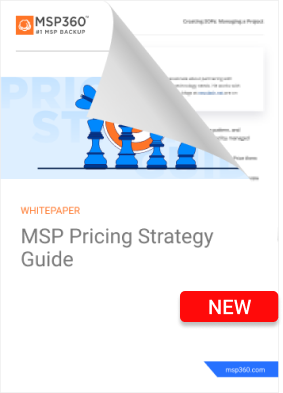When it comes to making big IT and services purchases, not every client may want to buy the same way.
This is especially true for MSPs, as small businesses often make up a significant portion of their clientele. A small business with a tight budget might not be able to afford a full-service managed service offering or maybe such a small business that the owners don’t feel like they need that level of support.
Pay-as-You-Go vs AYCE
One potential solution to this is a “pay-as-you-go” (PAYGO) service offering for smaller or nonprofit business clients. Under this model, a small business, nonprofit or other types of clients may pay a small monthly fee to cover bare minimum basics, then be billed hourly for any other services or repair needs. This is more of an “a la carte” menu, compared to the traditional MSP model of “all you can eat” (AYCE) for a flat per-device or per-user rate per month.
What this package looks like varies greatly from MSP to MSP. The small monthly fee often covers some essentials like server monitoring and maintenance, antivirus, patch management, or email filtering. Some MSPs may also include a few hours of billable services under their small monthly fee, allowing for coverage of a few quick calls or ticket requests a month.
Further reading MSP Pricing: The Startup Guide
For many small business clients, especially those under five or ten employees, this may cover the vast majority of IT needs. However, when emergencies arise, equipment breaks, or it’s time for an upgrade, clients will pay an additional hourly billable rate for the MSP’s services. The result is a package that the client can tailor to their needs, only paying for those items that they directly use and feel contributes to their business.
In each of these cases, the MSP will want to clearly outline in the service-level agreement (SLA) what's supported and what will incur additional fees. Having expectations clearly set in the SLA will ensure that there's no confusion down the road when it comes to billing.

The downside of this model for clients is that if their needs frequently exceed what’s covered by the base service fee, it could end up being more costly than they think. In fact, it could end up being more expensive than a flat-fee model (as well as more unpredictable for financial planning). This is a risk for clients embracing this type of service model.
For an MSP, the “pay as you go” model allows for a more customized set of IT offerings. However, the break-fix model also may prevent them from embracing the full benefits of predictability and ratability of a recurring revenue services business. For that reason, many may want to consider transitioning their clients to a full-service model over time, perhaps by introducing them to a hybrid model or upgrading some of their services to a higher-tier model.
The Option that Works
In the end, the model an MSP chooses to follow (or at least offer as an option) will depend on what type of businesses they are trying to attract as clients. By working backward from what those clients need, an MSP can tailor their offering to be the most attractive to those businesses and help them succeed together as partners in the longer term.






